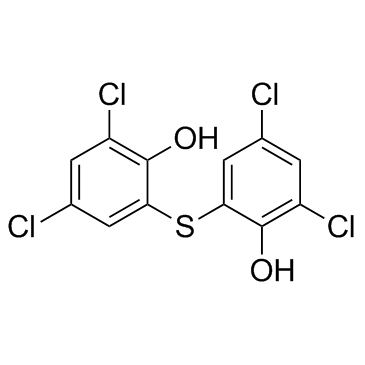Hydrogen peroxide induced stress in human keratinocytes and its effect on bithionol toxicity.
L Reid, R H Clothier, N Khammo
Index: Toxicol. In Vitro 15(4-5) , 441-5, (2001)
Full Text: HTML
Abstract
Exposure to hydrogen peroxide causes oxidative stress in keratinocytes. Previous work has shown that the antiparasitic drug bithionol has an EC(50) of 0.7 microg/ml (2 microM) with primary human keratinocytes, but that these cells do not respond to photoactivated bithionol. Bithionol is known to be photoactivated by UV-A visible light, therefore this study aims to investigate the effects of inducing oxidative stress in the cells prior to bithionol treatment alone and in the presence of UV-A visible light. Oxidative stress, by hydrogen peroxide treatment, caused the cells to become sensitive to photoactivated bithionol. Bithionol alone reduced the amount of oxidative stress, while following photoactivation, an augmentation in the amount of oxidative stress and cell cytotoxicity was observed. The hydrogen peroxide treatment did not alter the sensitivity of the keratinocytes to 5 J/cm(2) UV-A visible light.
Related Compounds
| Structure | Name/CAS No. | Molecular Formula | Articles |
|---|---|---|---|
 |
Bithionol
CAS:97-18-7 |
C12H6Cl4O2S |
|
An improved thyroid hormone reporter assay to determine the ...
2012-01-05 [Toxicol. Lett. 208(1) , 30-5, (2012)] |
|
Determination of bithionol, bromophen, nitroxynil, oxyclozan...
2010-01-01 [J. AOAC Int. 93(4) , 1340-6, (2010)] |
|
Novel therapeutic strategy for neurodegeneration by blocking...
2015-02-01 [Neurobiol. Dis. 74 , 144-57, (2015)] |
|
Bithionol inhibits ovarian cancer cell growth in vitro - stu...
2014-01-01 [BMC Cancer 14 , 61, (2014)] |
|
Slack, Slick and Sodium-Activated Potassium Channels.
2013-12-01 [ISRN Neurosci. 2013(2013) , (2013)] |